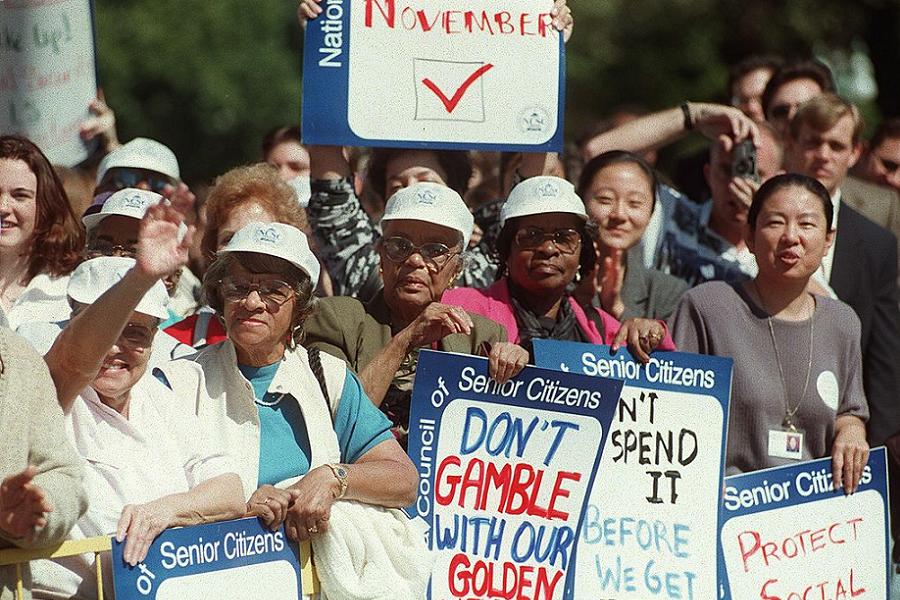Old-Age Pensions

GEORGE BRIDGES/AFP/Getty ImagesA crowd gathers to listen to U.S. Vice President Al Gore speak during a Social Security rally with Congressional Democrats on Capitol Hill in Washington, D.C.
Social Security is hands down the most popular government program of all time. Known as the “third rail” of politics – because you’ll die if you touch it – Social Security paid stipends to 60 million people in 2015, and it expects to pay 78 million by 2035, the year that the last Baby Boomers become eligible for benefits.
It’s not hard to see why. Social Security check #00-000-001, in the amount of $22.54, was paid to Ida Fuller of Vermont. She went on to live to be 100. By the time of her death in 1975, Ms. Fuller had collected $22,888.92 in benefits on her initial contribution of just $24.75, paid between 1937 and 1939.
While Ms. Fuller’s case was extreme, Social Security has provided retirement, disability, and survivor benefits at slightly above the market rate since our grandparents were in high school.
Wikimedia Commons
Before the 1935 Social Security Act, retirement was the prerogative of millionaires. The vast majority of middle- and low-income people in America paid for their golden years by working through them.
While some people had private plans or state pensions, the 1930 census found that 58 percent of the over-65s in America were still in the workforce, despite the fact that women back then were far less likely than now to hold jobs.
These older workers sat on top of the employment market, at the top of their seniority, effectively preventing all of the younger workers behind them from moving up a notch in their careers. Not only did this encourage youth unemployment, it condemned millions of American citizens to working lives that stretched out from late childhood essentially until death. For the record, in 2002, only 18 percent of senior citizens worked at all, and most of those did so part-time, just to supplement their retirement benefits.
To get a more in-depth look into just how bad housing was in the early 20th century, check out our post on New York tenements. Then, to learn about the historical events that produced massive government relief programs, check out our stories on the Dust Bowl and the Great Depression.





